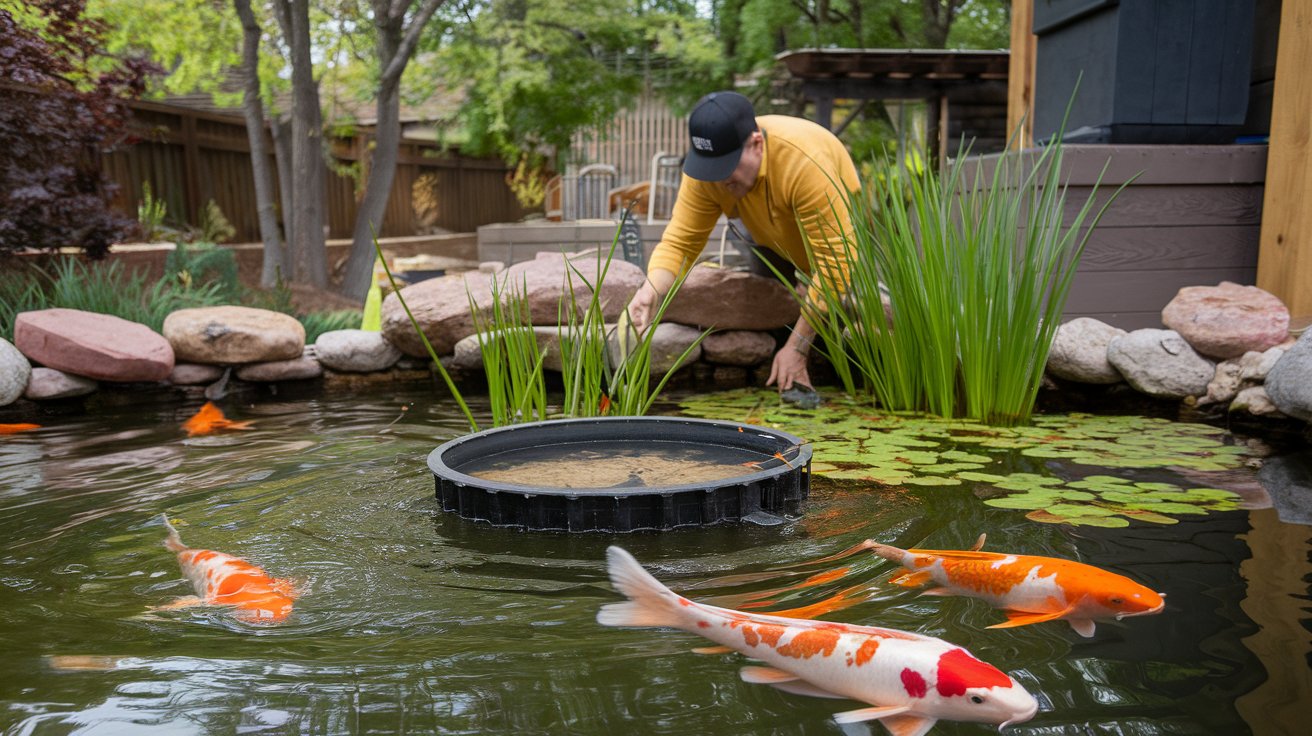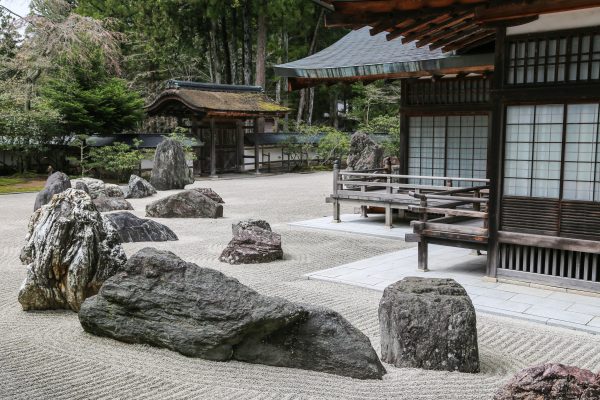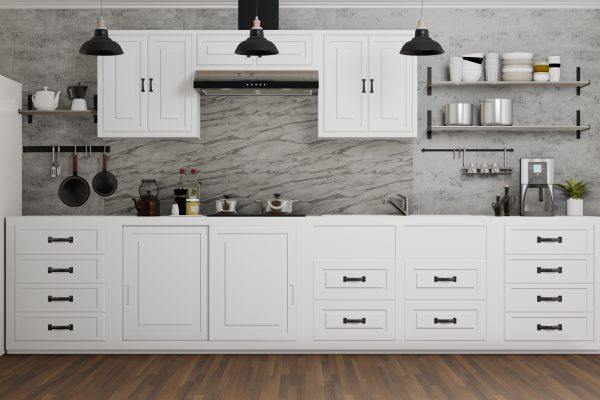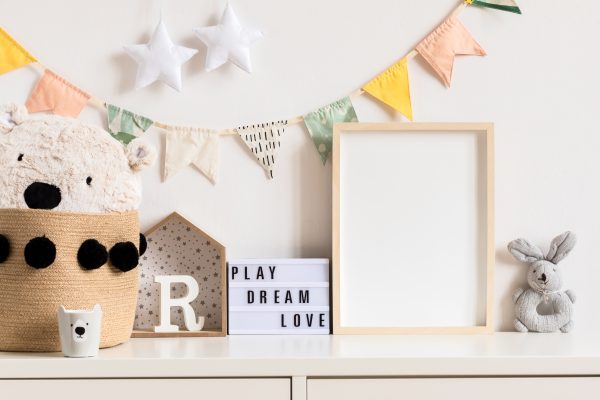Home>Ideas and Tips>Backyard Koi Pond Filtration System: Clean Water Maintenance


Ideas and Tips
Backyard Koi Pond Filtration System: Clean Water Maintenance
Modified: October 29, 2024
Learn essential tips for maintaining a clean koi pond with the right filtration system. Ensure clear, healthy water for your fish year-round.
(Many of the links in this article redirect to a specific reviewed product. Your purchase of these products through affiliate links helps to generate commission for Storables.com, at no extra cost. Learn more)
Maintaining a backyard koi pond is a rewarding experience, but it requires dedication and the right techniques to keep the water clean and healthy for your fish. A well-maintained filtration system is crucial for ensuring that your koi pond remains clear and free from debris. In this article, we will delve into the essential steps for maintaining a clean and healthy koi pond, focusing on the filtration system.
Planning and Installation
Before you start building your koi pond, it is essential to plan and design it with maintenance in mind. Here are some key considerations:
- Avoid Corners: Corners can lead to water stagnation, which can cause algae buildup and reduce water quality. Instead, opt for a design that includes gentle curves and slopes to ensure proper water circulation.
- Shadow: Incorporate some shadowy areas in your design. These help keep the water cool and reduce algae growth.
- Good Liner: Use a high-quality liner to prevent water leaks. A good liner will also help in maintaining the shape of your pond.
- Pump and Filtration System: Choose a pump that can circulate at least 1.5 times your pond's volume each hour to ensure proper aeration. Select a filter that matches your pond's capacity to keep the water clear and clean.
- Skimmer: Install a skimmer to collect debris 24/7. This will help in maintaining the overall cleanliness of the pond.
- Professional Installation: While it might be tempting to do everything yourself, hiring a professional for the installation can ensure that everything is done correctly. Professionals are experienced and can identify potential issues before they become major problems.
Spring Cleaning
Spring is an excellent time to perform a thorough cleaning of your koi pond. This season is crucial for setting the tone for the entire year. Here’s what you need to do:
-
Clean the Pond Thoroughly:
- Remove all large and tiny debris from the pond.
- Pressure-wash the muck and gunk on gravel and rocks.
- Clean and test the pump, filters, skimmer, and aerators.
-
Turn On Filtration System:
- Once everything is clean, turn on the filtration system.
- Replace filters if necessary.
- Change the water to ensure it is fresh and clean.
-
Check Liner and Visible Pipes:
- Inspect the liner for any signs of damage or leaks.
- Check all visible pipes for blockages or damage.
-
Trim Perennial Plants:
- Trim perennial plants around the pond to maintain their health and prevent them from overgrowing into the pond.
-
Change Koi Food:
- Gradually change the koi food to a warm-season type as the temperature rises.
-
Add Annual Plants:
- Add annual plants as the temperature rises to enhance the aesthetic appeal of your pond.
Regular Maintenance
While spring cleaning is essential, regular maintenance is also crucial for keeping your koi pond clean and healthy. Here are some tasks you should perform regularly:
-
Test the Water:
- Regularly test the water for pH levels, ammonia, nitrite, and nitrate levels. Use a water testing kit to ensure the water is safe for your koi.
-
Add Beneficial Bacteria:
- Beneficial bacteria help break down organic waste in the pond. Add them regularly to maintain a healthy biological balance.
-
Check and Clean Filters:
- Clean mechanical filters and skimmers regularly to ensure they are functioning properly.
- Follow the instructions provided with your filter system for cleaning and maintenance.
-
Check Water Pump Regularly:
- Regularly check the water pump to ensure it is working correctly. Clean or replace it if necessary.
-
Keep Pond Plants Under Control:
- Trim and maintain aquatic plants as needed to prevent them from overgrowing into the pond.
-
Don’t Overcrowd Your Koi Pond:
- Avoid overcrowding your koi pond as this can lead to poor water quality and stress on the fish.
-
Take Care of Aquascape Design:
- Regularly inspect your aquascape design to ensure that it is not causing any issues with water circulation or clarity.
-
Create a Schedule:
- Create a schedule for regular maintenance tasks to ensure that everything is done on time.
-
Follow Seasonal Changes:
- Adjust your maintenance schedule according to seasonal changes. For example, you might need to change the koi food or add more beneficial bacteria during different seasons.
-
Go for a Professional Pond Cleaning Once a Year:
- While daily, weekly, and monthly DIY maintenance is easy once you familiarize yourself with how to clean koi ponds, a full cleanup is another story. It’s better done by a professional who can catch hidden flows in your filtration system, observe plants that might puncture your liner, clean even large ponds in a short time, and most importantly, keep your koi safe while doing it. The best moment to go for a pro koi pond service is spring or fall, and you’ll typically pay between $850 to $950 for a cleanup, depending on pond size and location.
Common Koi Pond Treatments
In addition to regular maintenance tasks, there are several common treatments you can use to keep your koi pond clean and clear:
-
Mechanical Filters:
- Mechanical filters trap and remove debris and sediment from the water. They are an essential part of any filtration system.
-
Biological Filters:
- Biological filters help break down organic waste in the pond using beneficial bacteria. These filters are crucial for maintaining a healthy biological balance in your pond.
-
Water Clarifiers:
- Water clarifiers pass water through a tube that houses an ultraviolet bulb, killing algae and other microorganisms that can cloud the water.
-
UV Light:
- UV light prevents algae bloom and maintains the clarity of the water. However, it should be turned off before cleaning the filter system to avoid eye damage.
Tips for Keeping Water Clear
If you find that your filter and pump are not keeping the water clear, here are some additional tips:
-
Regular Cleaning of Filters:
- Clean mechanical filters and skimmers regularly to ensure they are functioning properly.
-
Use Pond Clearing Liquid:
- If you have tried the pond clearing liquid from Home Depot and it didn’t work, consider consulting with a professional who can diagnose the issue and provide a solution.
-
Monitor Food Intake:
- Monitor the amount of food going into the pond to prevent overfeeding, which can lead to poor water quality.
-
Maintain Aquatic Plants:
- Trim and maintain aquatic plants as needed to prevent them from overgrowing into the pond.
-
Check for Leaks:
- Regularly inspect the liner for any signs of damage or leaks.
By following these steps and tips, you can ensure that your backyard koi pond remains clean and healthy for your fish. Remember, regular maintenance is key to maintaining a thriving ecosystem in your pond.
Was this page helpful?
At Storables.com, we guarantee accurate and reliable information. Our content, validated by Expert Board Contributors, is crafted following stringent Editorial Policies. We're committed to providing you with well-researched, expert-backed insights for all your informational needs.
















0 thoughts on “Backyard Koi Pond Filtration System: Clean Water Maintenance”